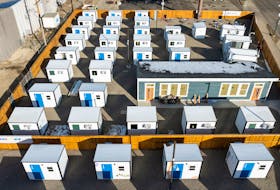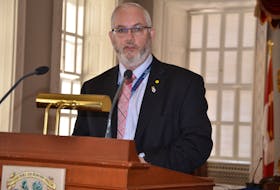Think of it as one of those annoyingly complicated math problems you had to deal with in high school.
You are budgeting to educate 66,323 students in 258 schools, province wide. (These are numbers for the 2016-17 school year.) In all, 97 of those schools are in urban areas, and 161 are in rural areas — meaning that 64.9 per cent of the students are in the 37.6 per cent of the schools that are urban, while 35.1 per cent of the students are in the 62.4 per cent of schools that are rural.
In the last 10 years, the ratio of students has changed dramatically: there are about 8,300 fewer students than in 2006-2007, and, at that point, the ratio of urban to rural students was 58.3 per cent urban to 41.7 per cent rural.
During those 10 years, almost all of the decline has been in rural areas, with urban areas seeing a drop of 296 students, and rural areas, 7,981.
It’s a time of financial trouble for this province. Against that backdrop, consider that during the 10 years in question, the total number of students has fallen by 16 per cent, while total education spending has shrunk by only 6.3 per cent. (There are non-mathematic variables, too: more densely populated areas are easier to provide services to than rural school catchment areas.)
So, if you are the English School Board for the province, where do you close schools to bring costs in line?
We’ll save you the trouble of figuring it out.
The board argued there were strong reasons in each of the other schools’ individual cases to keep them open, including the safety of students who would have to spend more time being bused on rural roads if their schools were closed.
The answer to the question, apparently, is “nowhere.”
Last weekend, the board voted on recommendations to close six schools (schools with a total of 87 students, accounting for 0.13 per cent of the total student population) and save $1.7 million in infrastructure costs.
The board closed only one — H.L. Strong Academy in Little Bay Islands, which has no students, and was unlikely to have any in the near future.
The board argued there were strong reasons in each of the other schools’ individual cases to keep them open, including the safety of students who would have to spend more time being bused on rural roads if their schools were closed.
The process of reviewing schools for closure will now start as the board tries to find a combination that saves money and doesn’t ruffle feathers.
But will it implement the next recommendations?
The problem with math is that often there’s only one right answer.
It would be wonderful if this province could afford to keep all the schools open and keep tuition rates low at Memorial University and throughout the college system.
It would be wonderful if we weren’t piling up new debt of millions of dollars a day.
But we are.
Eventually, tough decisions will have to be made. Or they will be made for us.









